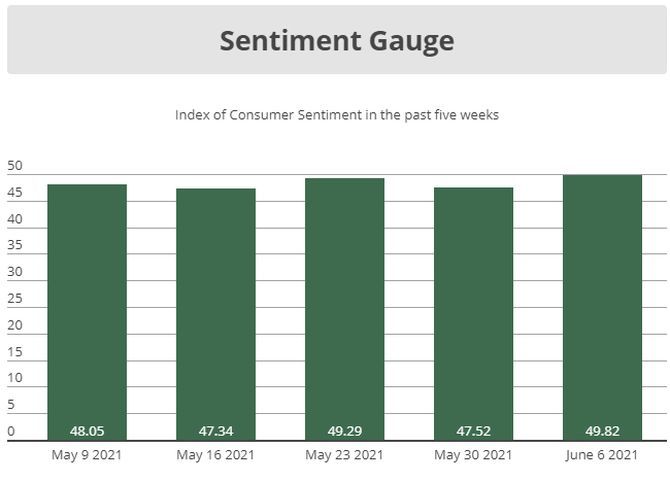
India has lost 25.3 million jobs since January
Employment fell by 2.5 million in February, 0.1 million in March, 7.4 million in April and then by 15.3 million in May, explains Mahesh Vyas.
The unemployment rate that reached 11.9 per cent in May 2021, continued to rise into early June.
The 30-day moving average unemployment rate as of June 6, 2021 was 13 per cent.
The labour participation rate that had fallen to 40 per cent has fallen further to 39.7 per cent.
And the most important labour market indicator, the employment rate which had fallen to 35.3 per cent in May, dropped to 34.6 per cent by June 6, 2021.
The Indian labour market is in its worst condition since the nation-wide lockdown months of April and May 2020.
The last four weeks have seen a particularly sharp deterioration in labour market conditions. The downturn began in the week ended May 16.
During this week, the labour participation rate was at 40.5 per cent which was higher by a whisker than the average 40.4 per cent rate around which this ratio has been hovering for several months since the 2020 lockdown.
But the unemployment rate shot up suddenly to 14.5 per cent after remaining stable for several weeks at around 8 per cent.
This implies that during this week of May 16, a number of people lost employment suddenly and they continued to look for jobs, albeit unsuccessfully.
In the next week that ended on May 23, the situation got worse with the unemployment rate shooting up to 14.7 per cent.
This happened even as the labour participation rate declined to 39.4 per cent.
The exceptionally high unemployment rate of the previous week apparently seriously discouraged labour from looking for work.
They retreated and brought the labour participation rate down.
The result of low labour participation and high unemployment was the lowest employment rate in nearly a year.
It fell to 33.6 per cent. This was the lowest since the week of June 7, 2020.
There was a recovery of sorts in the week of May 30.
The unemployment rate fell sharply to 12.2 per cent from its recent peak of 14.7 per cent in the previous week.
But, labour continued to reel under the effect of the previous week’s high unemployment rate.
Their disappointment with the high unemployment rate is seen in the continued fall in the labour participation rate.
This fell to just below 39 per cent from 39.4 per cent in the previous week.
The feeling of being discouraged is understandable because the unemployment rate inched up again in the week ended June 6 when it ended at 13.6 per cent.
Labour participation rates have been decidedly under 40 per cent.
The average over the three weeks ended June 6 was 39.2 per cent.
This consistent fall in the labour participation rate is a matter of concern.
Low and falling labour participation rate and high unemployment rate imply a fall in the employment rate and a fall in absolute employment.
The employment rate fell from 36.8 per cent in April 2021 to 35.3 per cent in May 2021.
This translated into a loss of 15.3 million jobs.
As mentioned earlier, this fell to 34.6 per cent measured by the 30-day moving average on June 6.
During the week ended June 6, it was much worse at 33.9 per cent. This implies a further loss of jobs.
Employment has been falling since January 2021 when it had touched a recent peak of 400.7 million.
It has fallen in each of the four months since then.
It fell by 2.5 million in February, 0.1 million in March, 7.4 million in April and then by 15.3 million in May.
The cumulative loss since January therefore is a substantial 25.3 million.
This is a significant 6.3 per cent fall in the employed workforce over a four month period.
More recent data on the employment rate suggests that the fall in employment may not have stopped till the first week of June.
This relentless loss of employment can be expected to abate somewhat in the coming weeks as many parts of the country that were under a lockdown have started announcing cautious relaxations.
These could provide some succour to the daily wage labourers who have suffered during the calibrated and localised lockdowns of May 2021.
Nearly 17 million daily wage labourers and small traders such as hawkers lost employment in May 2021.
Most of these losses were the direct outcome of the increasing lockdowns across the country during the month.
As these restrictions on movement are relaxed, these workers can be expected to return back to their haunts in search of employment.
We can expect a quick recovery of the informal jobs that were lost in the unorganised sectors because of the local lockdowns.
But, there is also a steady fall in the employment independent of the lockdowns.
The total non-farm jobs lost since January 2021 works out to 36.8 million.
Of this, daily wage labourers account for 23.1 million. Salaried employees account for 8.5 million and the rest are entrepreneurs.
It would take a strong recovery of the India economy to recover the remaining jobs or revert to the employment levels of 2019-20.
The unlocking process can be expected to repair about two-thirds of the job losses associated with the lockdown of May 2021.
That would be 17 million out of the 25 million non-farm jobs lost during the month.
Mahesh Vyas is MD and CEO, CMIE P Ltd.
Source: Read Full Article



